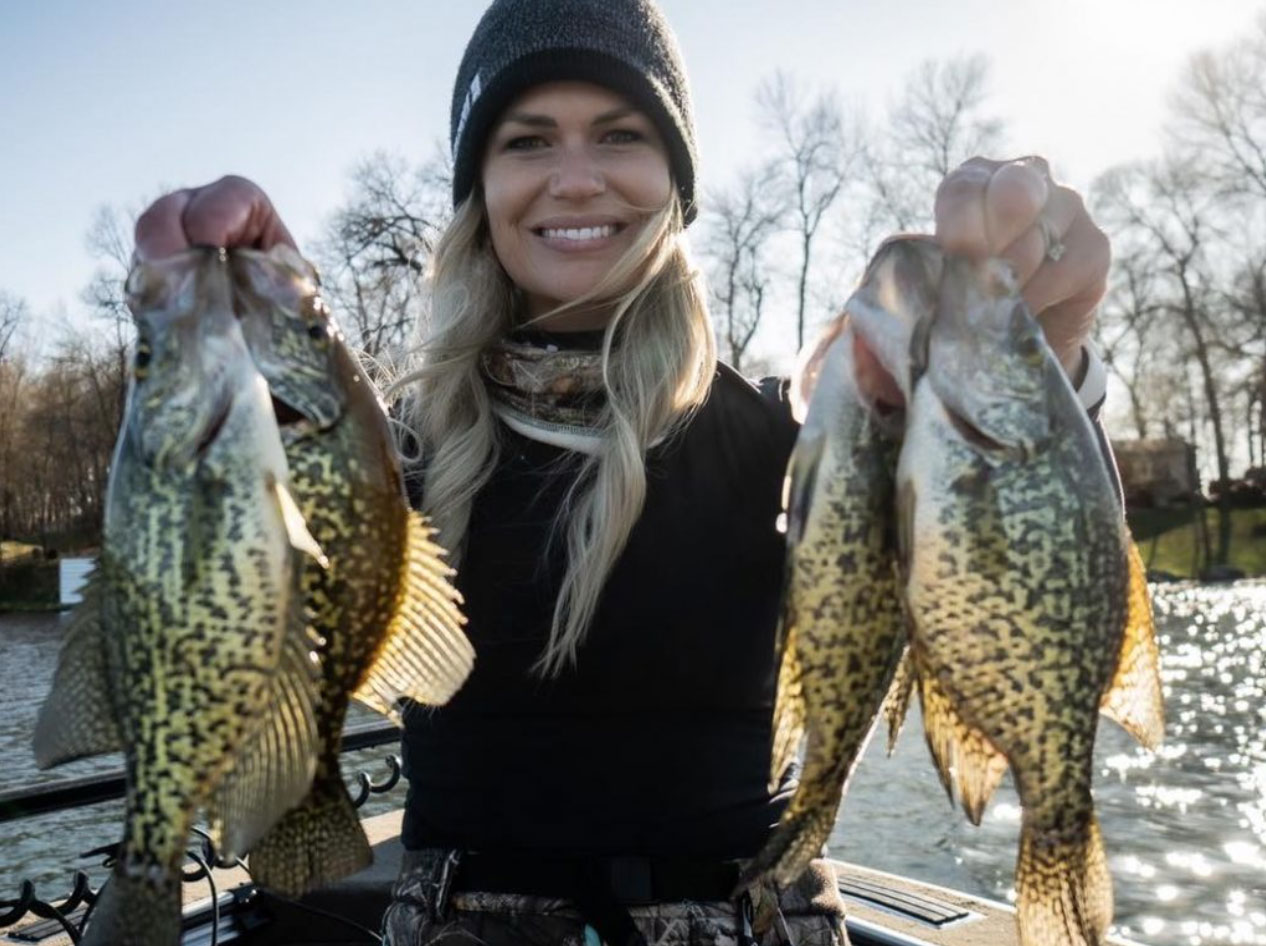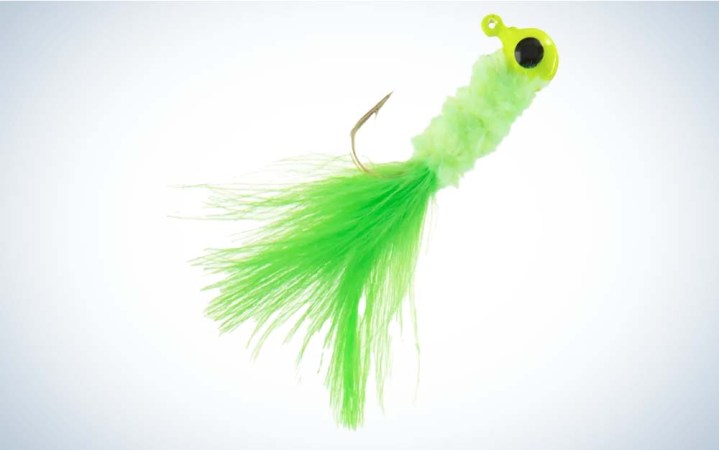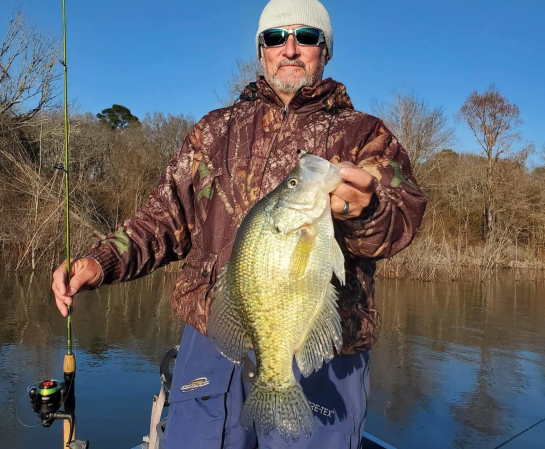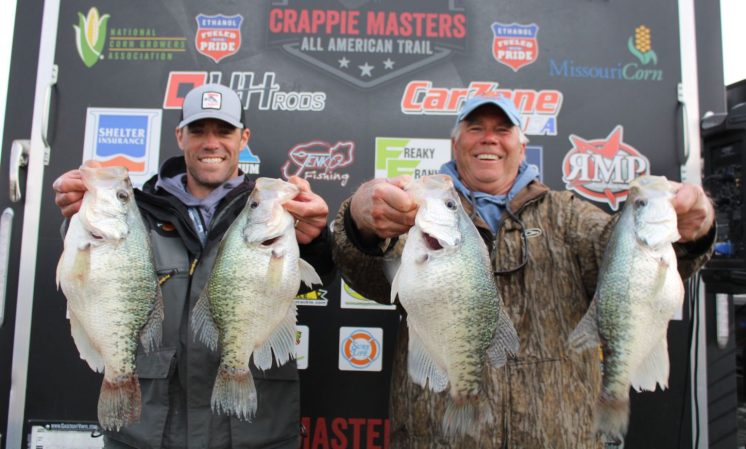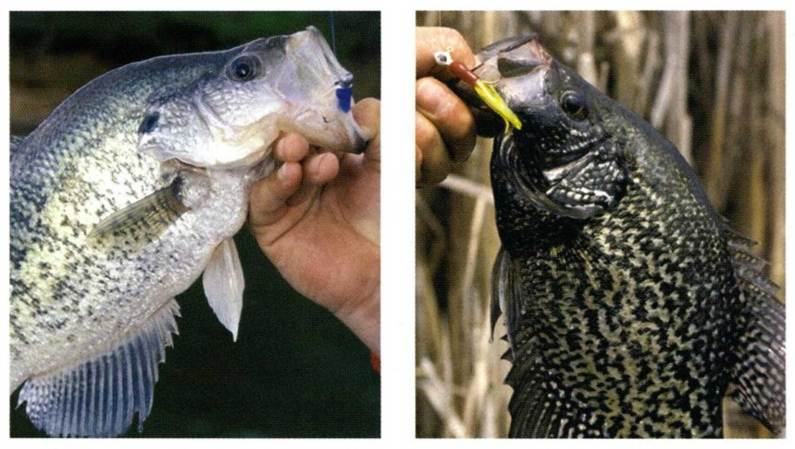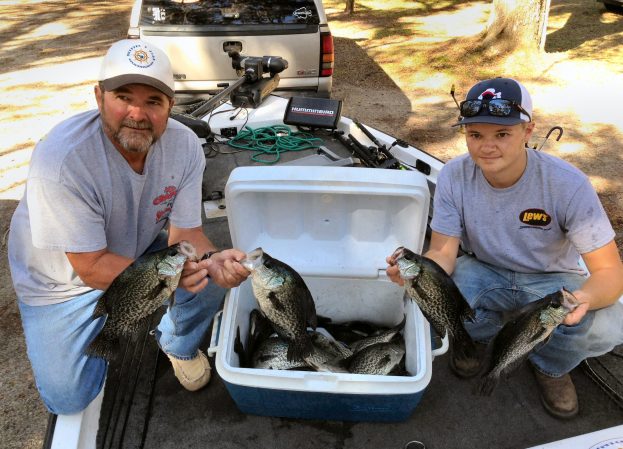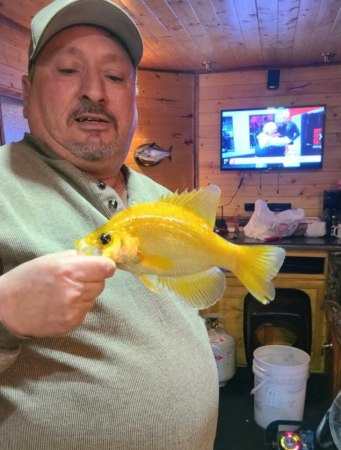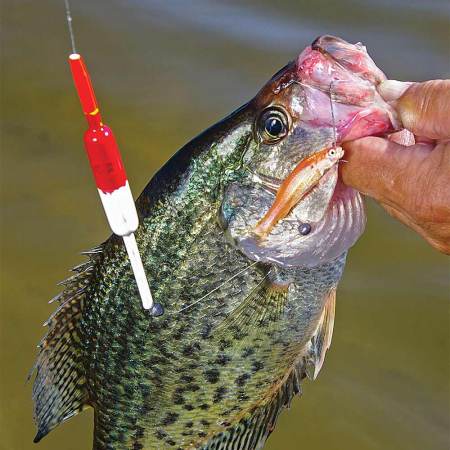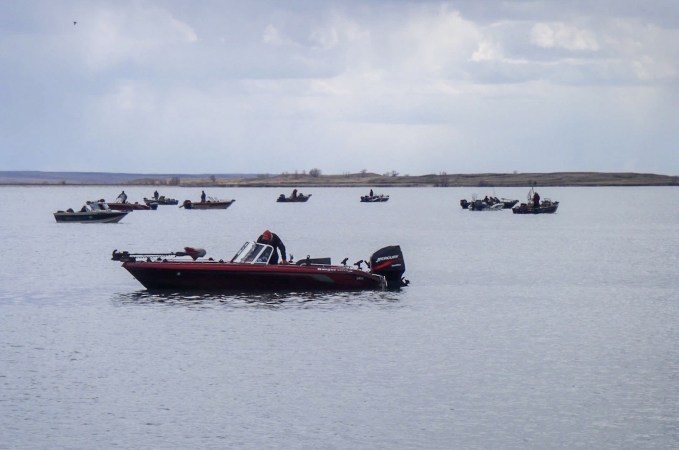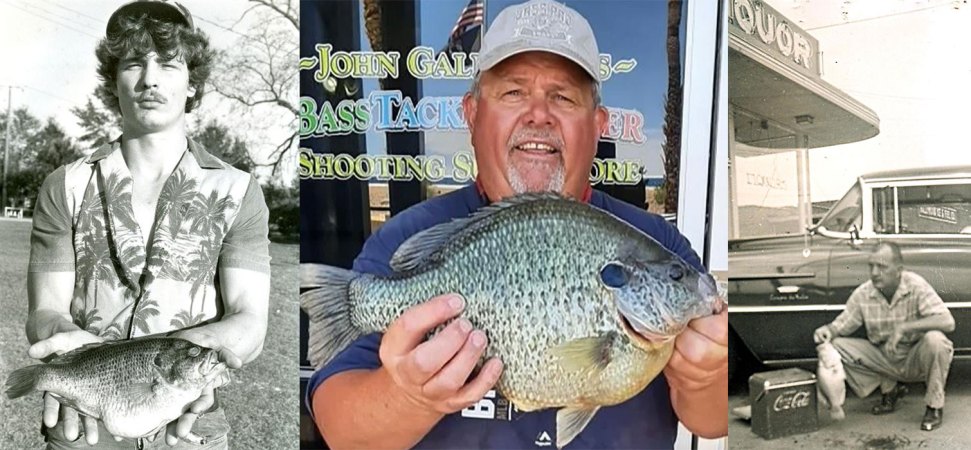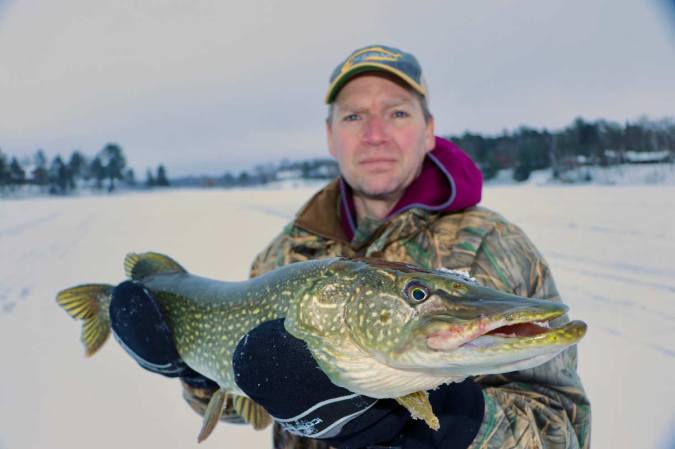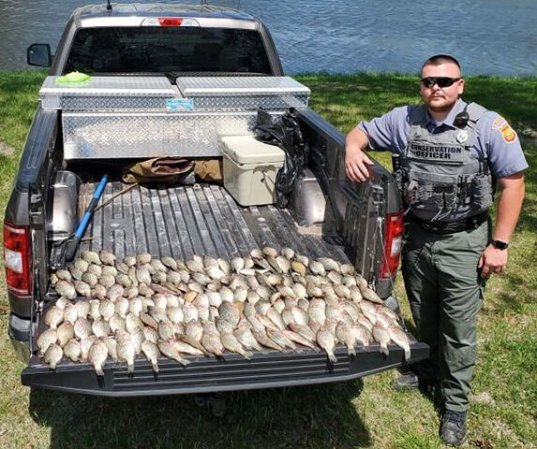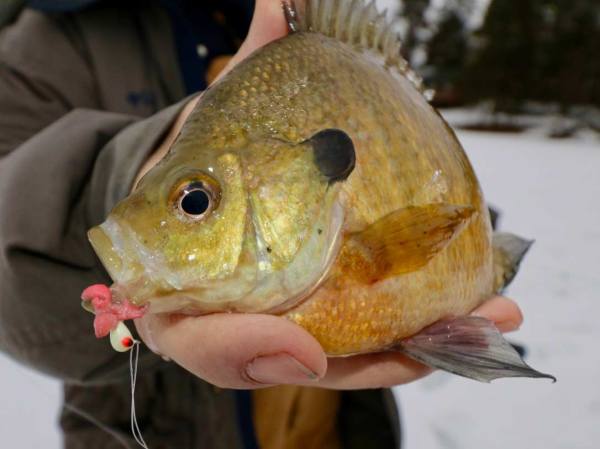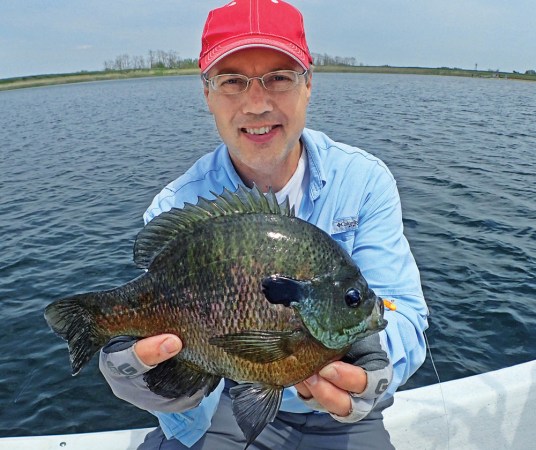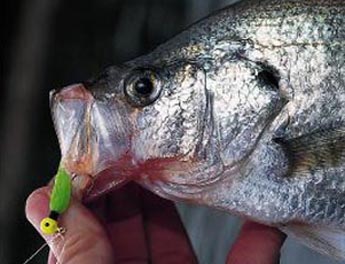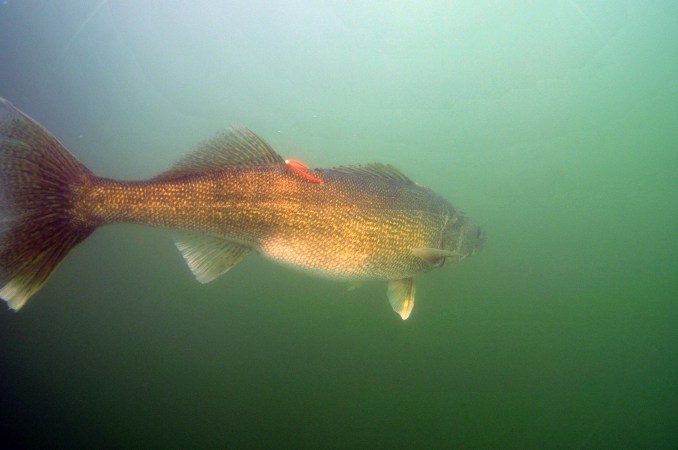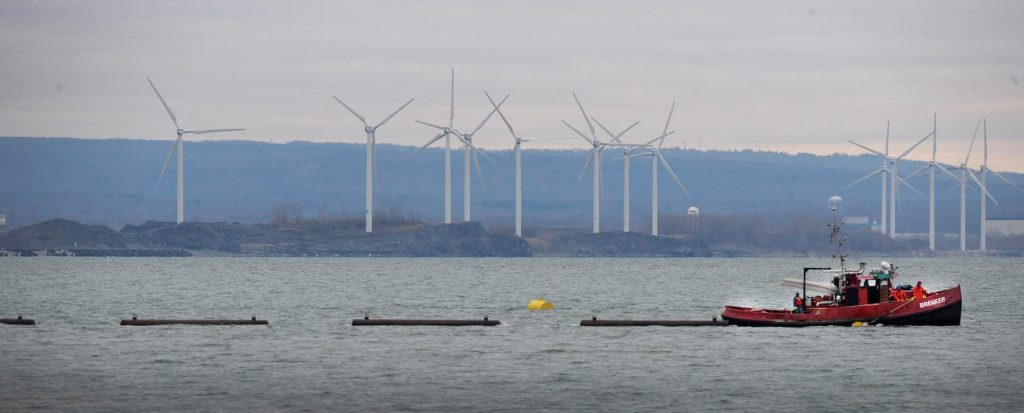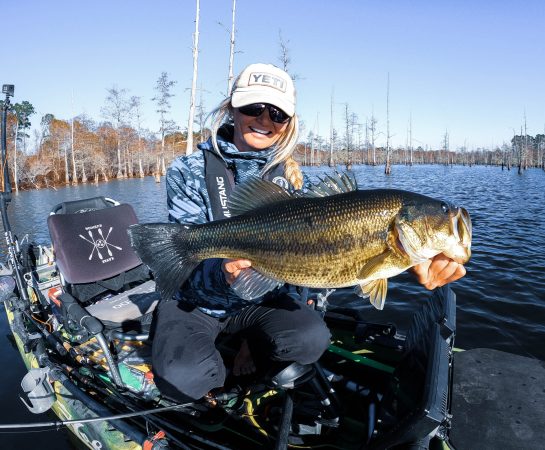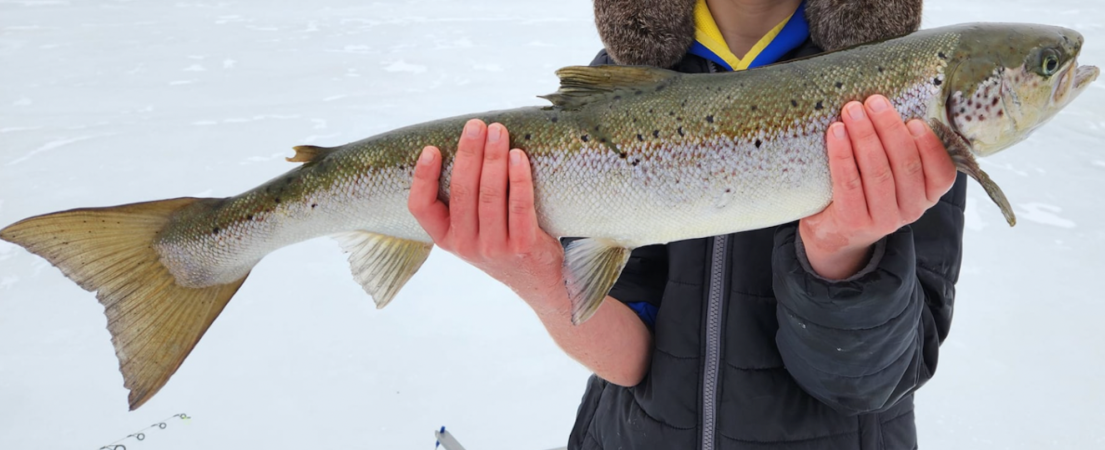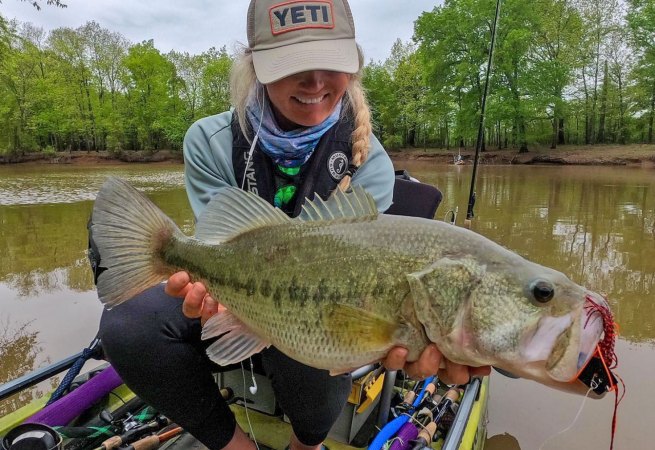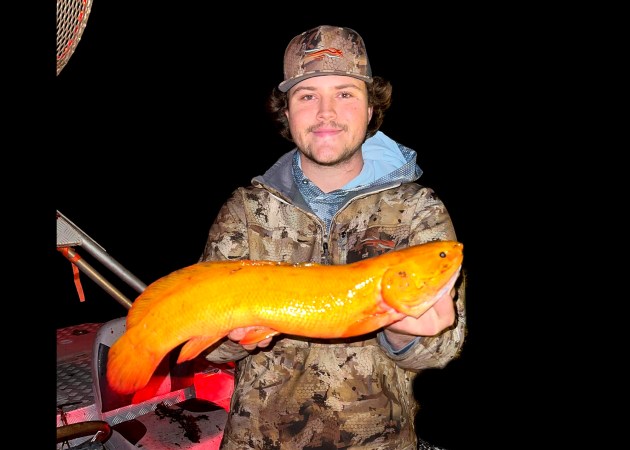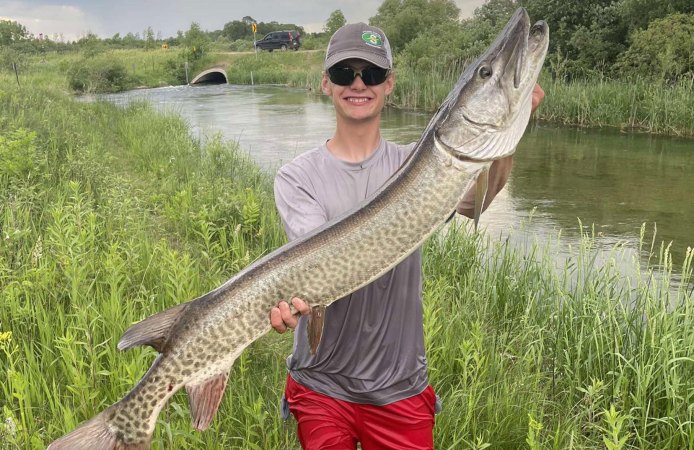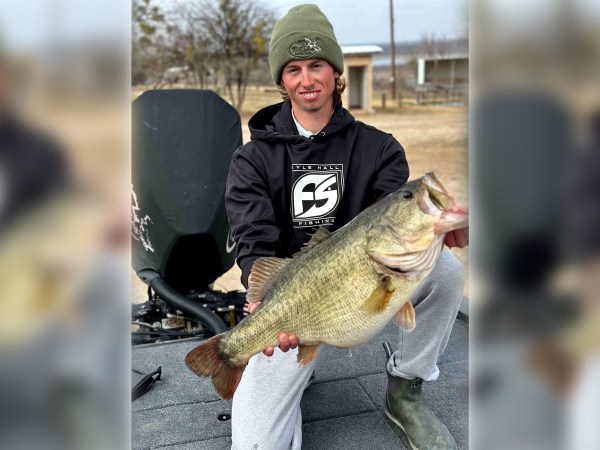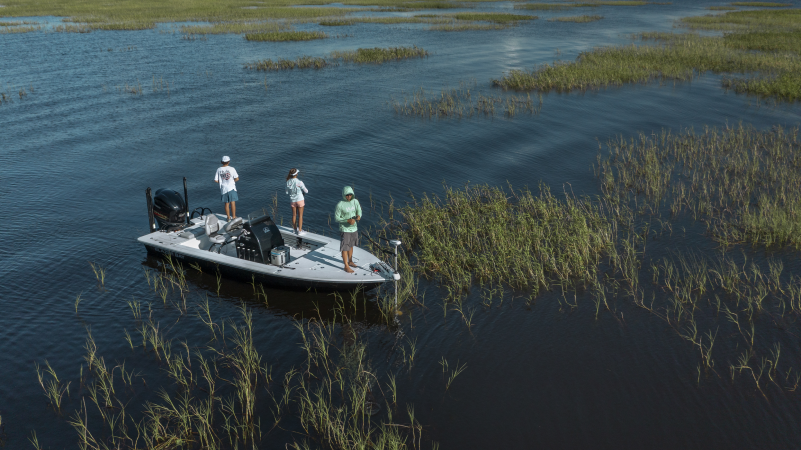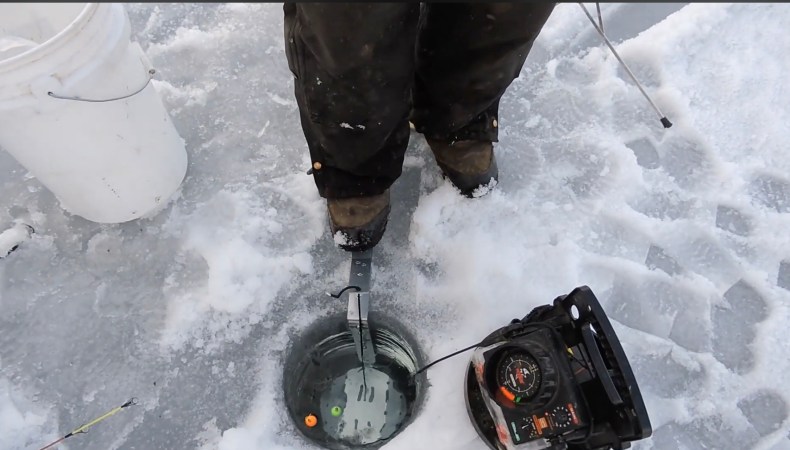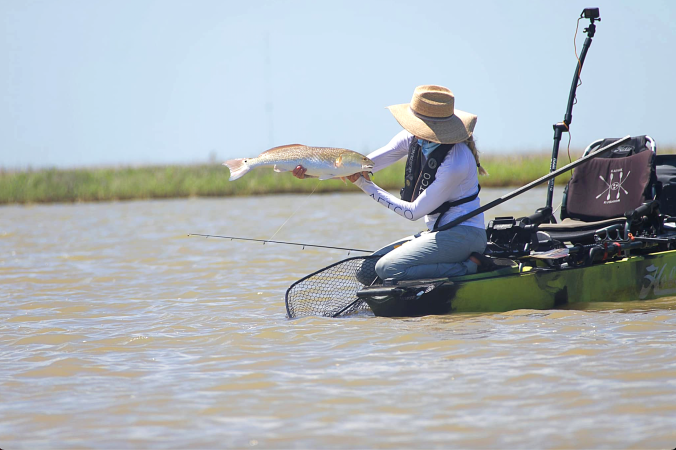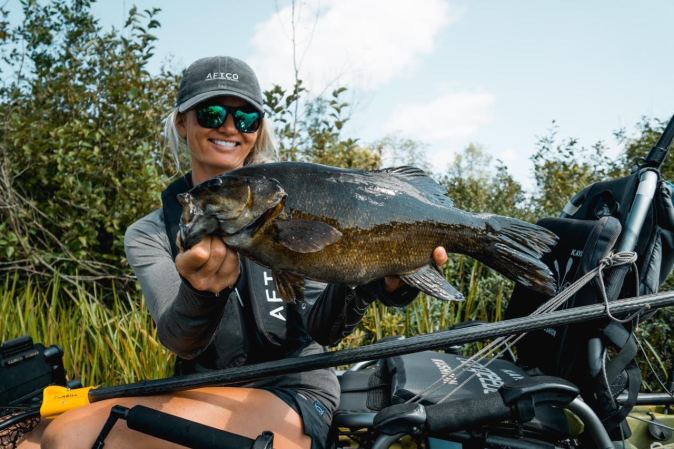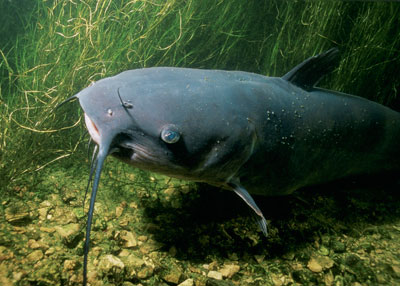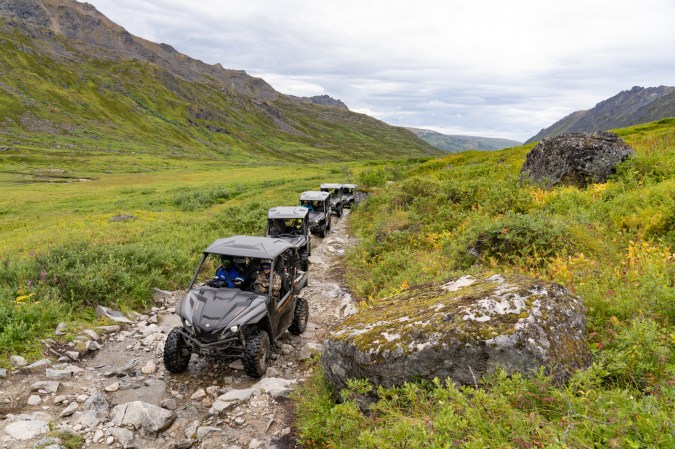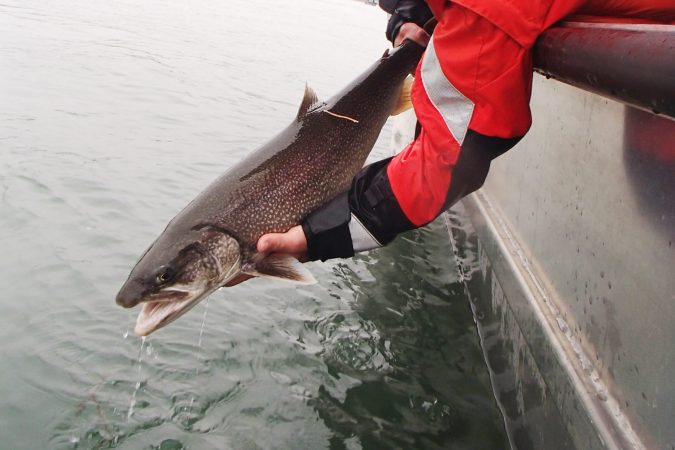Crappie are hands down one of my favorite species to target. They are an abundant, aggressive fish that are also excellent in the fryer. Whether you are bobber fishing in the spring, or ice fishing in the heart of winter, they present one of the greatest fishing opportunities for anglers across the country.
However, the key to crappie fishing success is to understand seasonal patterns that allow you to find and target crappie more easily. This knowledge along with understanding the different presentations for targeting crappie will help stay on the fish all year long.
That’s why we have put together the ultimate crappie guide, where we’ll cover:
- Crappie fishing gear and tactics
- Understanding crappie patterns by season
- Understanding the crappie spawn
- How to catch crappie in spring
- How to catch crappie in summer
- How to catch crappie in fall
- How to catch crappie in winter
Crappie Fishing Gear
Before we break down crappie patterns and presentations per season, let’s first focus on the crappie fishing gear you need. In most situations, crappie gear can be defined by one word: ultralight. Your entire setup will usually consist of lightweight jigs, lightweight line, and a lightweight rod.
Let’s start with the ultralight rod. This means a rod that is incredibly flexible, allowing you to not only detect the lightest bites, but also allow you to work the tiniest and most finesse baits. Rod control is very important, especially when it comes to finesse jig fishing. In most cases, you can’t go wrong with a longer rod, which will give you more casting distance, and allow you to pitch into some of those hard-to-target places. I personally use a couple of Tuned Up Custom Rods Apex Elite Ultralights in the 7’2” length. However, any ultralight rod will do the trick.
Next, you will want to pair your rod with some light line. Most crappie anglers use 4- to 6-pound line. I really like 4-pound monofilament for most crappie situations. This is because I prefer the monofilament stretch on crappie, especially when dealing with bigger hooksets on smaller-mouthed fish. I also find tying small jigs to be easier, saving both time and hassle when trying to change presentations. Some anglers prefer lightweight braid tied to a lightweight fluorocarbon leader (more sensitivity paired with more invisibility), while others will use straight fluorocarbon (the least visible line with high abrasion resistance). No matter the line of choice, keep it light and pair it with a light rod and light presentation.
Next let’s talk about presentations, which will depend heavily on season. However, if you’re looking for an all-encompassing list, check out our guide to the best crappie lures. Besides those lures, I recommend keeping a stash of the following:
- Bobbers: Paired with small jigs (or hooks), split shots, and live bait, bobber rigs work year around, although I find them to work best during spring.
- Jigs: Lead, glass, and tungsten jigs all have a different fall rates and density. In most cases, 1/32 to 1/16 oz jigs will do the trick.
- Plastics: For those aggressive crappie days, it’s tough to beat plastics, as they allow you to get to fish quicker, requiring less time re-baiting. Soft plastics also offer a more active presentation.
- Live Bait: Whether you are using minnows in the fall or spikes in the winter, having the option to add real-life movement and scent to your line is always a benefit.
How to Catch Crappie by Season
Crappie patterns change significantly by season. In most areas, this is signified by changes in water temperatures. These changes in water temperature affect their eating patterns, migrations, when crappie spawn, and more.
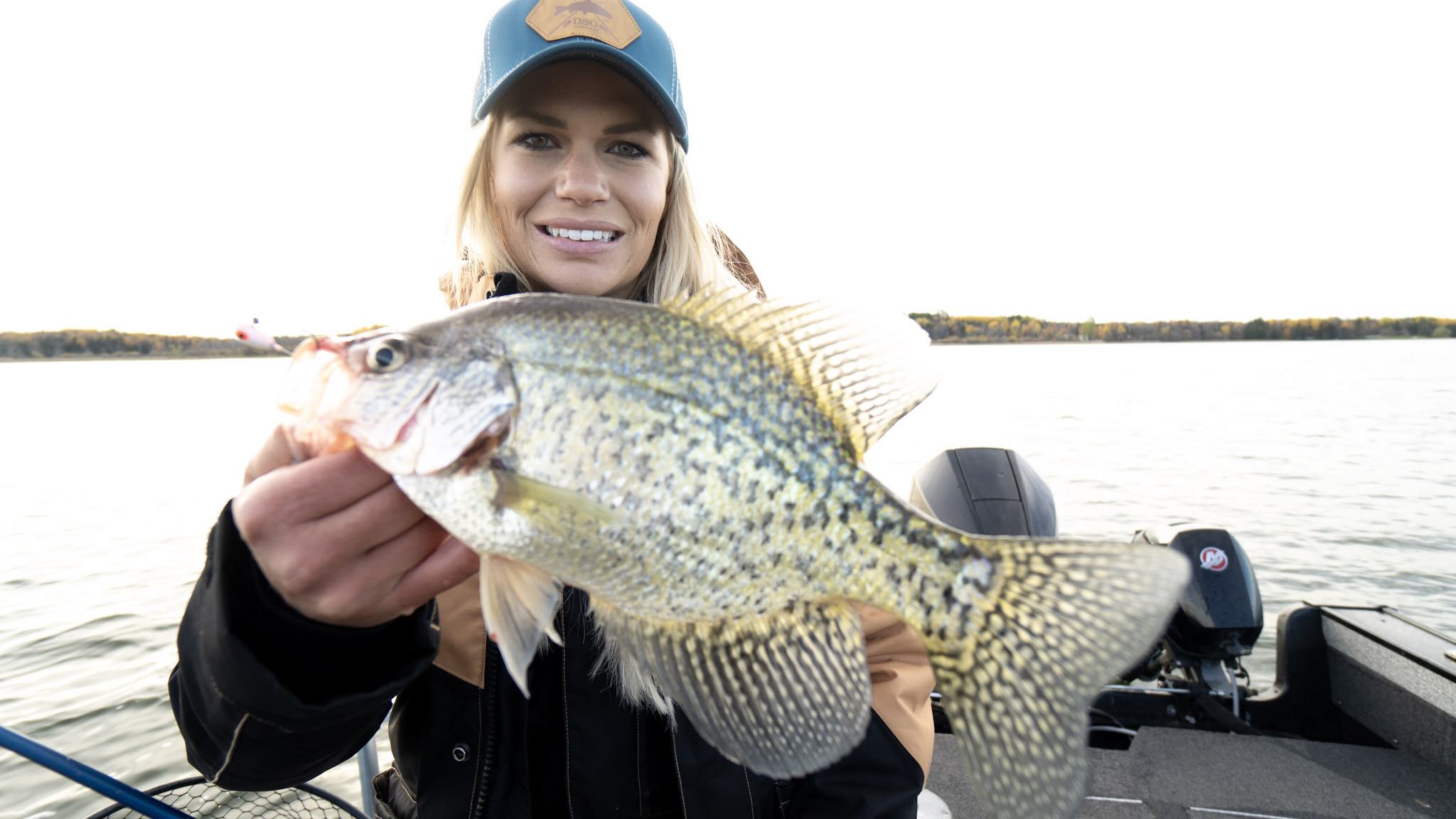
In general, during the warming days of spring, crappie tend to be found shallow. In the summer as temperatures peak and the water column stabilizes, crappie are found scattered in the weeds. By fall, they start to migrate toward deeper water before developing a more steady pattern for winter (particularly in the ice belt where fish will spend time migrating from weedlines to basins). However, keep in mind that each region warms differently. Spring fishing in the South is much earlier than in the Midwest. Large variations can even be seen between two borderin states. That’s why it’s important to first understand the basics of crappie patterns and presentations, so you can be best equipped wherever you fish.
Where to Find Crappie in the Spring
Spring is one of the very best times of the year to target crappie. We will define this season as a time when temperatures start approaching the 50’s, crappie begin shifting into warmer, shallow water, and feeding patterns begin to ramp up.
There are many benefits to fishing during this time. Not only does shallow water and dark colorations on the fish make catching them this time of year unique, but it also offers shore anglers a chance at nonstop action. If you are looking for simple, shallow water fishing, this is it.
To take full advantage of spring crappie fishing there are a few keys to finding these fish. First, you need to understand that fish are searching for warm water. This is because of both feeding patterns and the desire to simply locate warmer water (it is not necessarily indicative of the spawn).
The key to warm water this time of year? Well, that usually means shallow water. As spring progresses, look for shallow bays, shallow shorelines, weed beds, cattails, and brush along the banks. If you don’t have the proper electronics to help you identify fish in these areas, simply throw your bait next to shoreline structure and cover water until you find feeding fish.
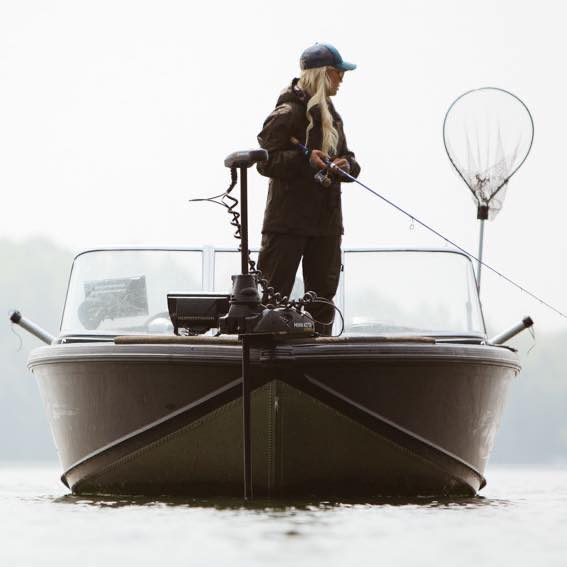
In the North this pattern is especially true, as shallow water tends to warm the fastest and lose ice the quickest. As this occurs, crappie quickly migrate to these areas. This is where much of their food is migrating too (and it’s why you want to target shallow feeding fish). Spring crappie fishing is relatively easy, as the fish are congregating and their feeding behavior is increasing.
Also, don’t be afraid to look for moving water. During this time of year, inlets can be warmer, and also moving water presents fresh oxygen. This is especially important in the ice belt after a long winter of diminishing dissolved oxygen and resources.
Understanding the Crappie Spawn
Spring fishing encompasses many changes, and this includes the spawn. The first mistake anglers make is that they assume the minute that the crappie start migrating to shallow warm water, it means they are starting to spawn. This is not the truth.
The spawn, like with most species, correlates heavily with water temperatures. However, unlike walleye and pike, which spawn when water temperatures are in the 40s, crappie don’t spawn until temperatures are well into the 60’s. In the north country, this means crappie generally don’t spawn until mid-May and into June, and of course varying by latitude (in the South, water temperatures warm up earlier). The spring patterns up to this point are based much more on food and warmth than reproduction. For more details on timing, read our guide on: When Do Crappie Spawn?
As we approach the actual spawn, however, fishing will eventually get difficult. It’s the one time of year when food isn’t their number one goal, so targeting fish before the spawn (and not during the spawn) is ideal. Additionally, as fish scatter and recover from spawning behaviors, fishing again becomes harder.
Of course, conditions will vary region by region and even lake by lake. The number one key here is to do your research: monitor the water temperature to plan your fishing around the spring feeding patterns and to take note of the spawn.
How to Catch Spring Crappie

Now let’s talk about how to actually catch crappie in the spring. In my opinion, there is no better time to go bobber fishing than in the spring. This is a simple technique.
- Use either a spring or slip bobber (this time of year I prefer spring for the quick adjustments and replacements) and cast to the shallows.
- Depending on the depth, set your bobber just a few feet from bottom. Pair it with a small jig (1/16 or 1/32) or hook.
- For bait use a small plastic (I prefer the Bobby Garland line), minnow, or even a worm.
- Cast along the shallows. If you don’t get a bite, keep on moving.
How to Catch Crappie in Summer
I consider summertime crappie patterns to start just past the post-spawn phase. It’s this time when their patterns change drastically as fish are done reproducing and water temperatures start to warm rapidly.
After the sluggish, immediate post-spawn stage, crappie start to scatter. This is when I find crappie the most difficult to locate. Instead of being congregated in the shallows or basins like other times of the year, they spread throughout a body of water. Oftentimes, they relocate to weedlines or in timber, and sometimes you can find them in random places throughout the lake, making them that much harder to hunt down.
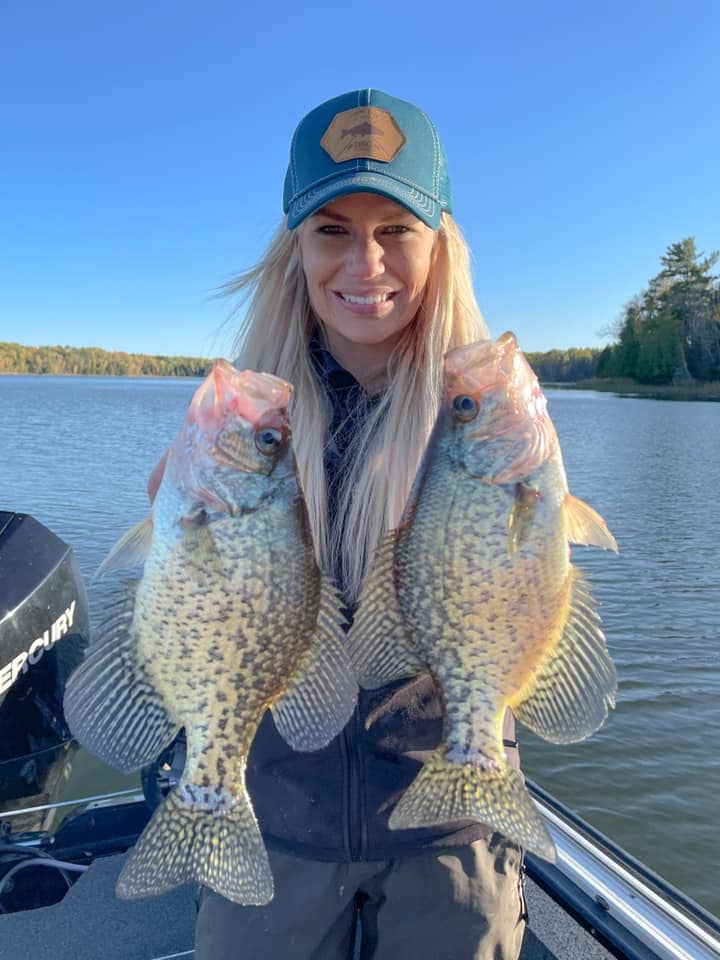
Even the best electronics might not help you as much this time of year either, as these fish are scattered in thick weeds and cover. So to catch crappie in the summer, you need to cover a lot of water. This will not only help you locate fish, but their aggressive, summer metabolism means they are cruising and much more likely to hit your active summer baits.
There are two main ways I like to target summer fish: trolling with snells or spinners, and by casting jigs into the structure and weeds.
Trolling for Summer Crappie
If I don’t see sunken timber or submerged structure and am not entirely sure where to start, I instantly go to the troll. In my opinion, the key to success with this tactic is to not let your line go too deep. Keep it a few feet off the bottom and go slow.
I will use a light split shot (much lighter than a bottom bouncer, or slip weight I’d use when targeting the bottom dwelling walleye) or not use a weight at all. On my snell, I will usually troll with a plastic or worm as both are resilient and can stay on when you cover ground.
The alternative is to also use a spinner/bottom bouncer setup with a snell float as shown here. This setup allows your line to float up from the bottom, giving it a different look altogether.
Some states, especially in warmer climates, allow for more complex rigs—such as the spider rig. This will vary state by state so be careful to read the regulations before heading out.
With either of these methods, I will then do a very slow troll through the weedlines, usually with a plastic or worm attached to my snell. It’s simple, effective, and helps you find where the fish are.
Casting for Summer Crappie
My next method is to cover ground with casting. If I happen to identify some sunken structures near shoreline, I choose to cast. In the north country where I reside, any 1/16 ounce jig would do the trick. Oftentimes I throw a 1/16 marabou jig over the structure, whether it be stumps, a partially sunken tree, or an isolated weed bed. The ticket is to be patient to let the jig fall just enough, and then proceed with a slow and steady retrieve. Again, depth is going to be the key, as you definitely want it a few feet below the water column but not along the bottom.
Additionally, soft plastics can really shine this time of year. They are durable, making them perfect for retrieving through flooded timber, weeds, and other challenging areas to fish that crappie are likely to be.
How to Catch Crappie in Fall
Fall means cooler air temperatures and shorter days, which also means cooling water temperatures and changing crappie patterns. The key during this period? Look for transitions. Fish will work between shoreline structure and deep basins, and as temperature extremes become more abrupt, they will navigate toward deeper water, where these variations are felt less and where large schools of bait begin to congregate.
However, it’s in these deep areas where they become the easiest to identify, especially if you have good electronics with you.
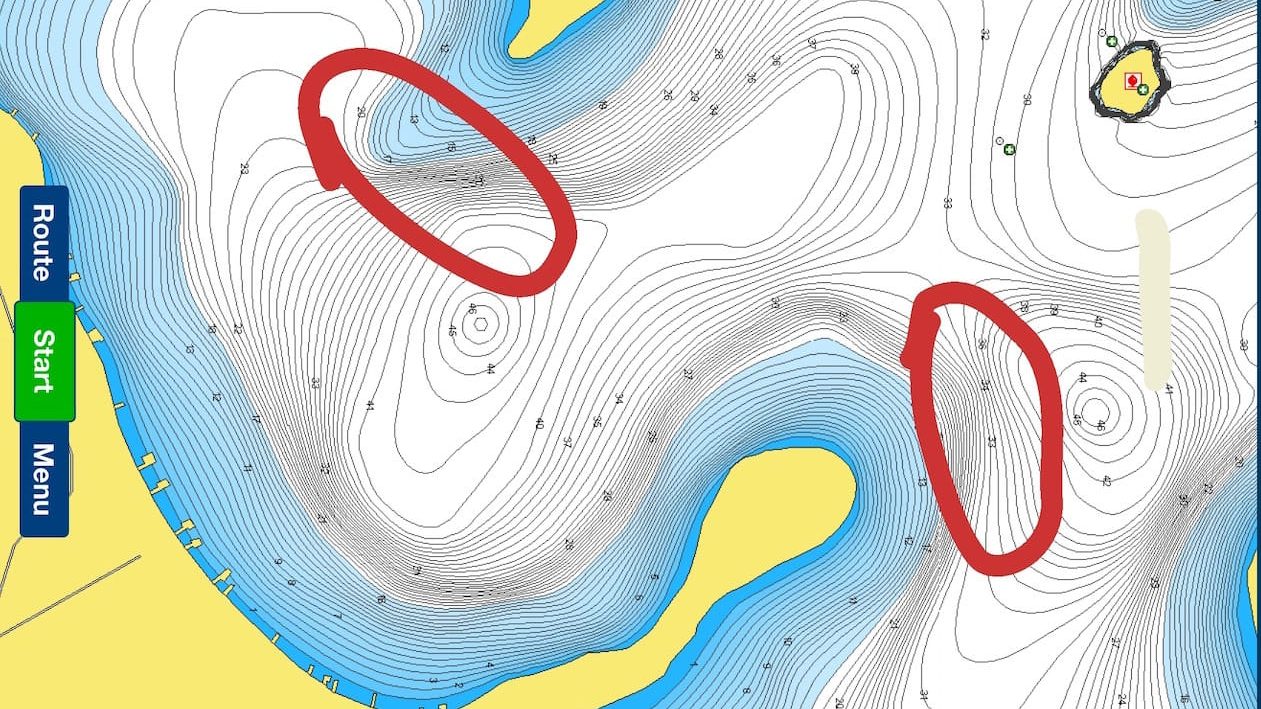
To catch fall crappie, we are going to slow it down and go more finesse. Water temperatures are dropping and so are metabolisms. That’s why this time of year is best spent fishing slower, more finesse baits.
I can’t emphasize enough that as temperatures cool, you can’t go wrong with lightweight tackle. Heavier marabou jigs and plastics can still work at times, but I find the best success this time of year finessing lightweight jigs on top of big schools of fish.
Even if you are on a smaller pod of crappie that aren’t overly competitive, you can manage to pick off a few with a more finesse presentation and by focusing on the slow fall rate. Oftentimes, it will entice a fish to rise up and check it out, naturally creating a competitive environment for the others.
My go-to for this type of vertical situation is a 1/16 or 1/32 Mo Glo Crappie jig tipped with a Bobby Garland Minnow Mind’R which is made to work alone or keep your minnow on (and I often times use livebait this time of year). However, any variation of a small jig might do the trick. Just take your time to let your jig slowly fall to the school of fish and you’ll be surprised by what you find.
How to Ice Fish for Crappie
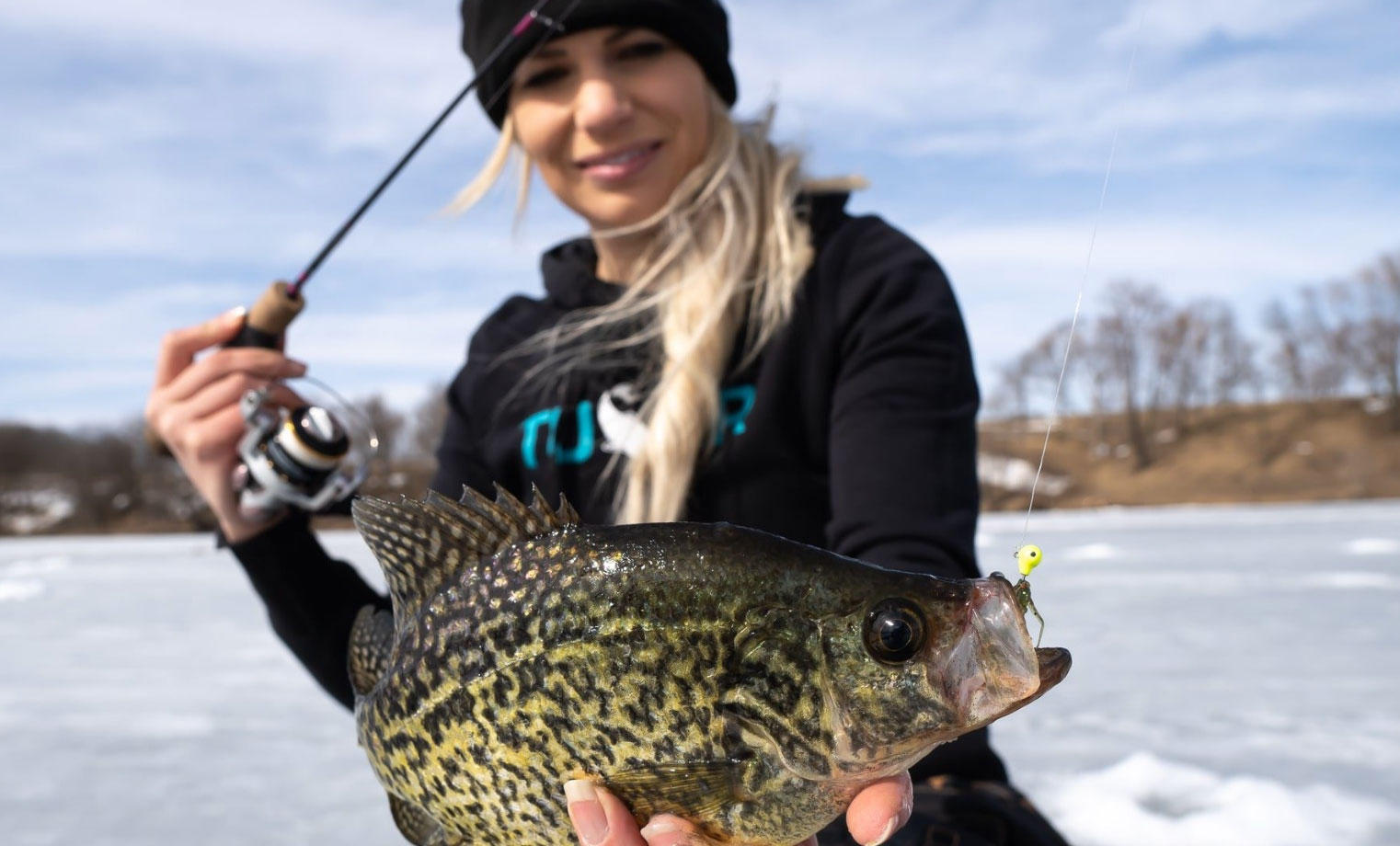
Last but not least, catching crappie through the ice. A favorite season for many people in the Midwest and Canada, ice fishing for crappie brings its own set of challenges. Without the ability to quickly move, it becomes more important than ever to understand patterns going into ice season.
Just like with fall, fish often can be found along the weedlines, but they are regularly shifting into the basin as water temperatures keep cooling and days keep getting shorter.
During early ice, I will head out in the evening, where I almost always find them deep and feeding. It’s these basins, filled with zooplankton, that often hold large schools of crappie. I always say if you see the zooplankton, then stay. Where there’s food, there’s fish.
I find as winter progresses, crappie follow this pattern more and more. In many lakes, covered with thick ice and snow, they will spend long periods of time migrating the basins, feeding on plankton and re-circling the area over and over again.
After you identify some promising locations, you are going to have to pound some holes until you find fish. The one benefit of ice fishing for crappie is that they are very easy to detect. Even with a basic flasher, their suspended behavior is a giveaway. When you find these fish and begin to target them, the key is patience.
When you stumble upon a basin crappie, here are a few tips. If it’s warm, punch as many holes across the bowl as you can. This will allow you to follow the migrating school of fish around making sure you make the most of your time on the ice. If you happen to have live imaging, have one person setup behind it pointing at the school of fish and the others running around with their traditional flashers actually targeting the fish.
If it’s cold and you need to setup the shack, that’s fine. Setup where you marked the largest school of fish. During this time of year, they are often migrating around the basin over and over again, so if you get a shot at them once, you will get a shot at them again.
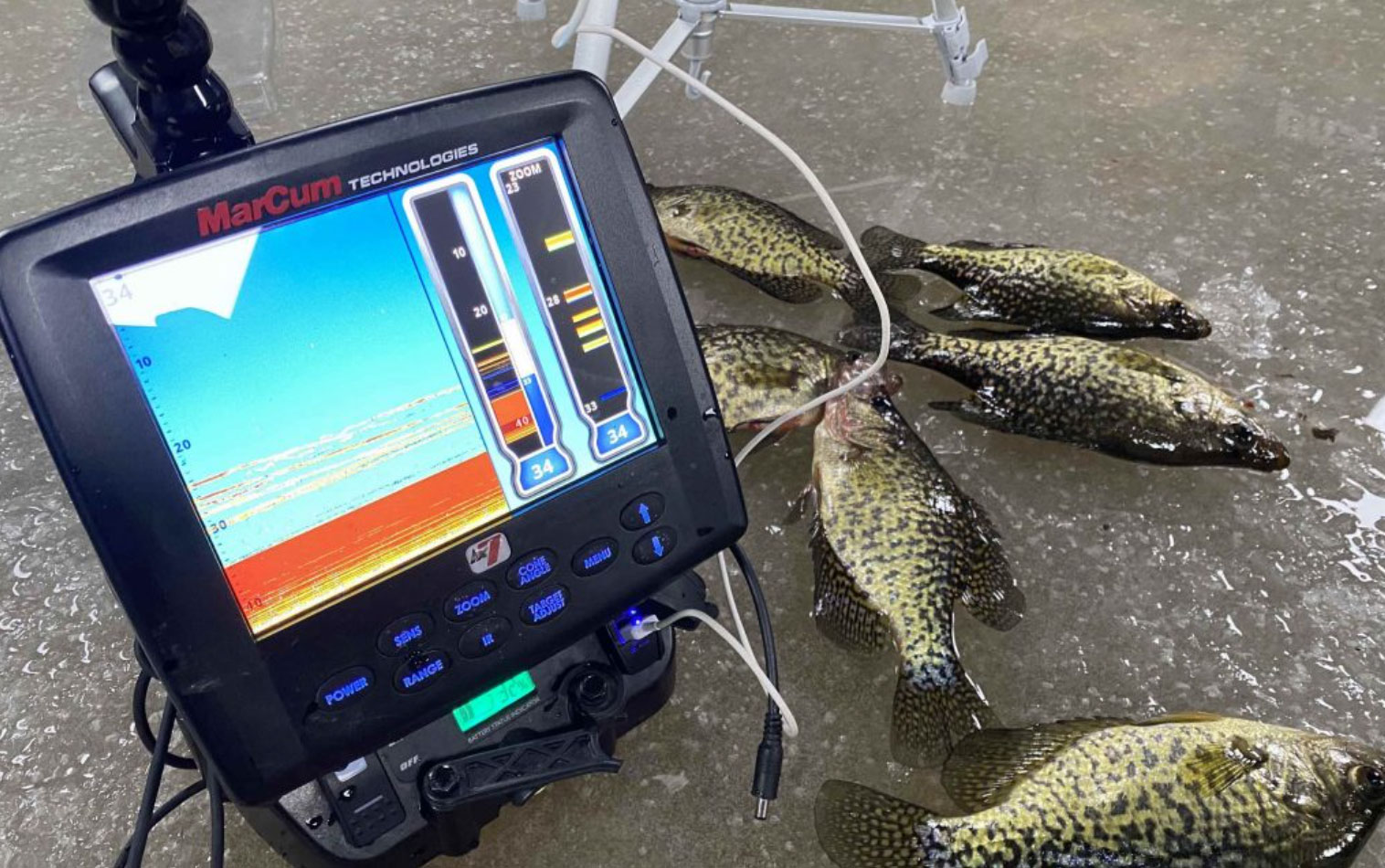
Just like with open water fishing, I recommend having a lightweight setup. This usually means an ultralight panfish ice rod or a noodle rod, allowing you to detect the lightest bites and work the lightest baits. Pair this rod with some lightweight line and a lightweight jig and you’ll be set. My favorite is the Lindy Tungsten Toad or the VMC bullfly. When you’re on an active school of fish, the tungsten allows you to get down to the bait quicker. Check out my guide to the best ice fishing lures for panfish.
I will often tip the jig with a small plastic, spike, or a minnow. As for action, I will focus on a very slow and steady raise. The number one issue I see people having is too aggressive of a presentation for such a finicky fish. Some anglers will aggressively jig when they should actually be slowly raising their bait. This is especially true when cold water means slower metabolisms.
Put the time in to find the fish, use patience and control when targeting them, and you will find plenty of ice fishing success.
Answers to Your Crappie Fishing Questions
What time of day is best for crappie fishing?
During the spring and summer, mornings and evenings are usually the best times to catch crappies. During ice fishing season, it’s possible to have hot nighttime crappie bites.
How deep do you crappie fish?
This all depends on the season, the body of water you’re fishing, and water temperature. Generally speaking, crappies are found shallow (3 feet to 6 feet) in the spring when spawning. They head to deeper structure in the summer, and then to even deeper lake basins in the winter and fall.
What is the best crappie fishing technique?
It’s hard to beat a crappie minnow fished under a slip bobber for spring crappies. In the summer, when you need to cover a lot of water, trolling or casting one of the best crappie lures are good options.
Are crappie fish easy to catch?
Crappies can be easy to catch at certain times of the year, but also incredibly difficult to even locate at other times of the year. So when the crappies bite is good on your local lake, make sure you take advantage of it. —Alex Robinson
Final Thoughts on Catching Crappie
By understanding crappie patterns, you will have a better chance at finding fish and finding success on the water. However, nothing beats on-the-water experience. Take these concepts and hit the water. But also bring a notebook and jot down your own findings (where you find fish, water temperatures, and depths). With a little practice and patience, you will master crappie fishing in every season.
